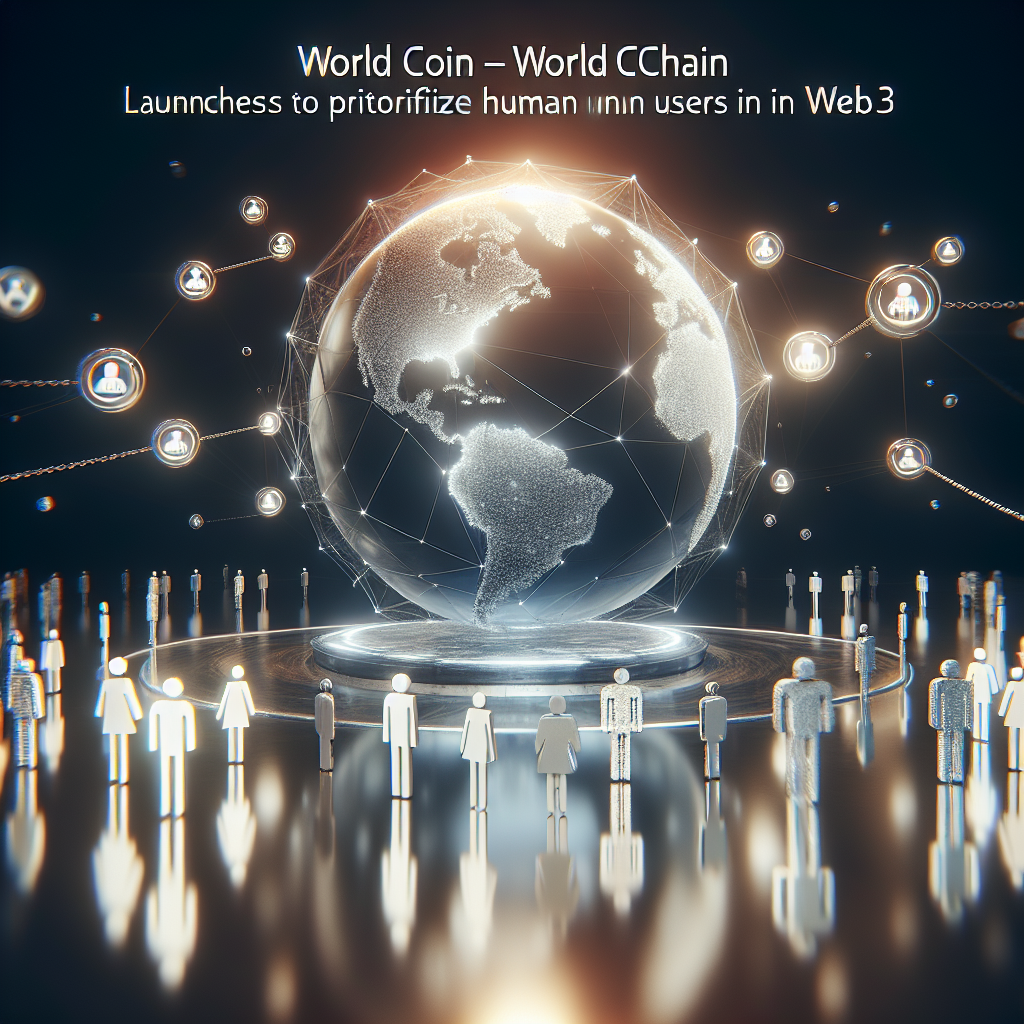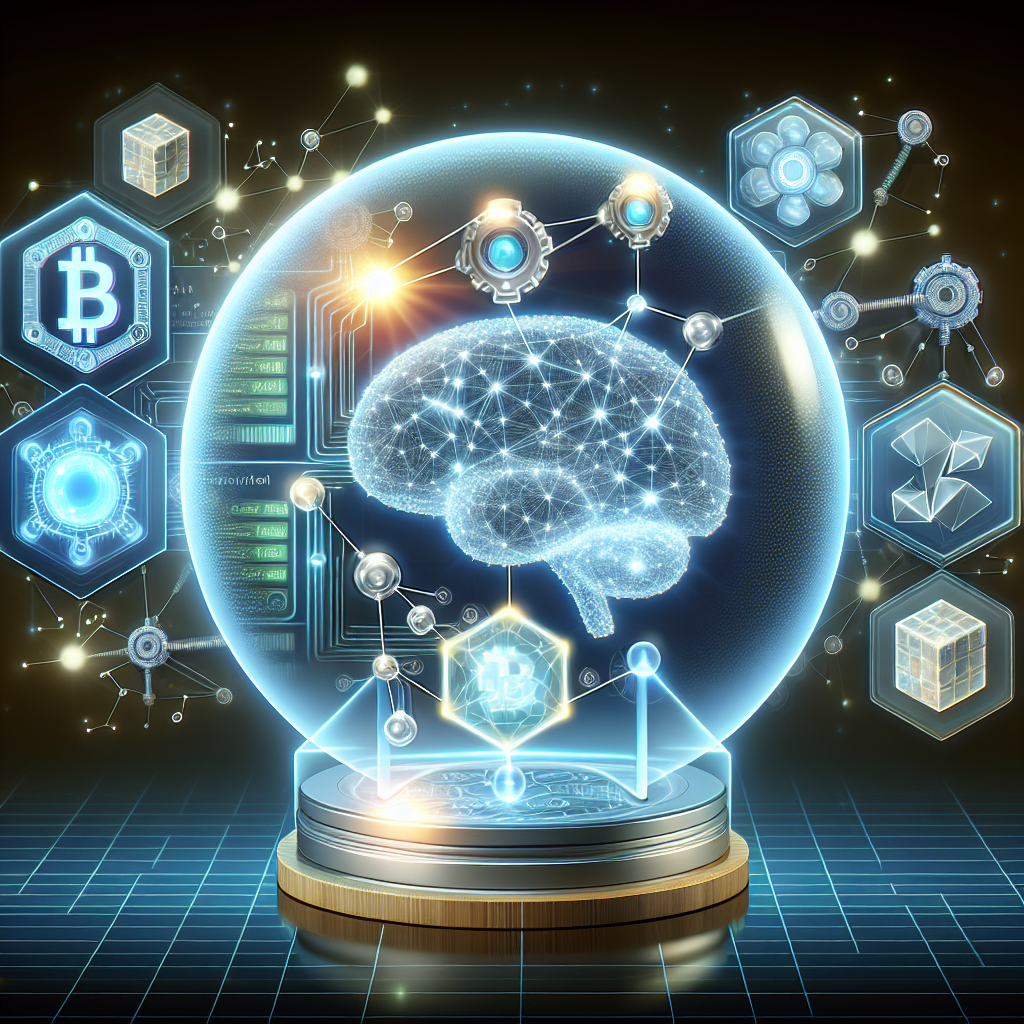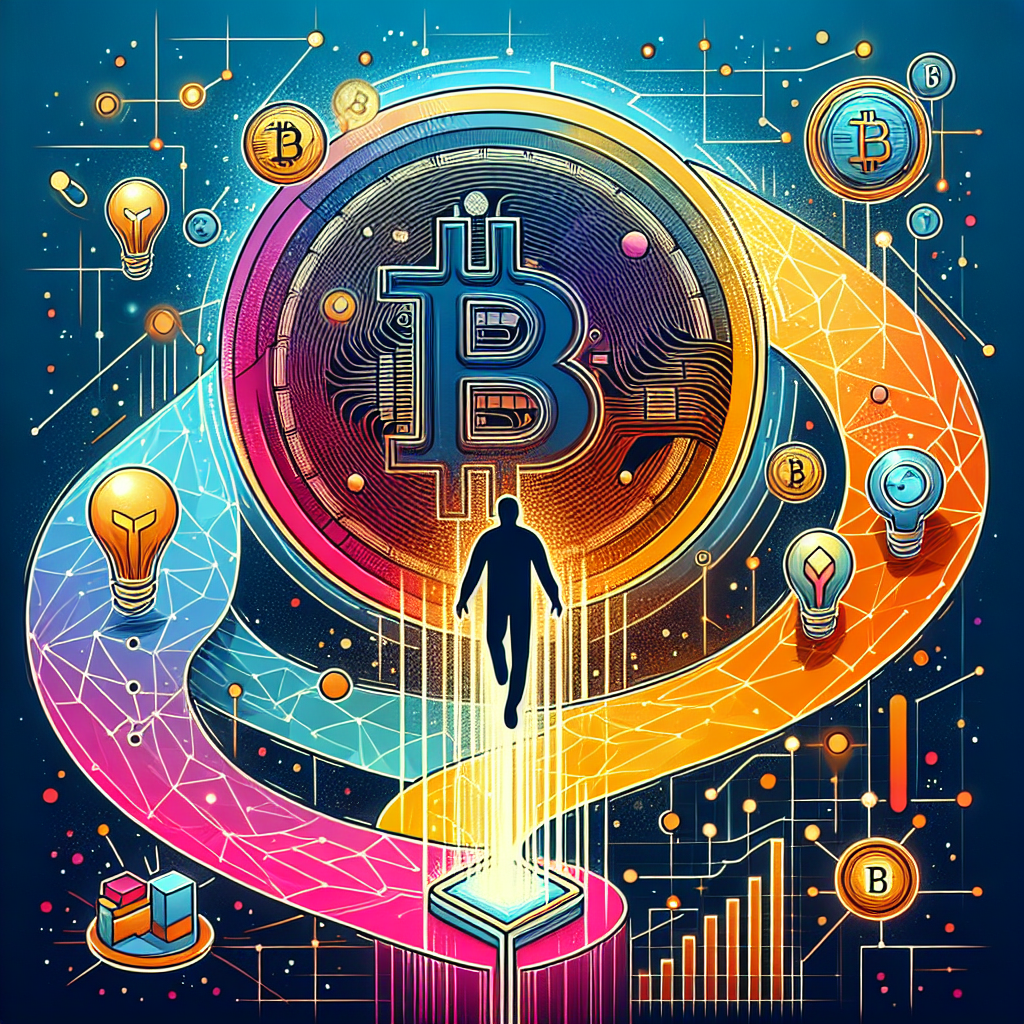Revolutionizing Web3: Worldcoin’s World Chain Puts Humans First
Attention all cryptocurrency enthusiasts! Worldcoin, the highly anticipated digital currency, has just made a groundbreaking announcement. In a bid to prioritize human users in the world of Web3, Worldcoin has launched the World Chain, a revolutionary platform that aims to bridge the gap between technology and humanity. This groundbreaking development has the potential to reshape the future of decentralized finance, putting people at the forefront of the digital revolution.
In this article, we will delve into the details of Worldcoin’s World Chain and explore how it aims to prioritize human users in the Web3 ecosystem. We will discuss the challenges faced by traditional cryptocurrencies in terms of inclusivity and accessibility, and how Worldcoin’s innovative approach seeks to overcome these obstacles. Additionally, we will examine the key features and benefits of the World Chain, shedding light on its potential to revolutionize the way we interact with digital currencies and blockchain technology. Strap in, because we’re about to embark on a journey into the future of finance!
Key Takeaways:
1. Worldcoin has launched the World Chain, a revolutionary blockchain platform that aims to prioritize human users in the Web3 ecosystem.
2. The World Chain seeks to address the current limitations of blockchain technology by focusing on user experience and accessibility.
3. By utilizing a unique identification system, Worldcoin aims to create a more inclusive and user-friendly blockchain network.
4. The World Chain’s emphasis on human users is a departure from the traditional focus on machines and algorithms in the blockchain space.
5. The launch of the World Chain represents a significant step towards a more user-centric Web3, where individuals have greater control over their data and digital identities.
Controversial Aspect 1: Prioritizing Human Users
One of the controversial aspects of Worldcoin’s World Chain launch is the prioritization of human users in the Web3 ecosystem. While this approach may seem noble and aligned with the principles of inclusivity and accessibility, it raises concerns about the potential exclusion of non-human entities and the implications for the development of a truly decentralized and autonomous system.
Advocates argue that prioritizing human users is essential to ensure that the benefits of Web3 technology are accessible to all individuals, regardless of their technical expertise or access to resources. By focusing on human users, Worldcoin aims to create a more user-friendly and intuitive experience, making it easier for individuals to interact with decentralized applications and contribute to the growth of the Web3 ecosystem.
However, critics argue that prioritizing human users may undermine the fundamental principles of decentralization and autonomy that underpin Web3. They argue that by giving preference to human users, Worldcoin risks centralizing power and control in the hands of a select few, potentially replicating the inequalities and power imbalances of the traditional web.
It is important to strike a balance between prioritizing human users for accessibility and inclusivity purposes while also ensuring that the core principles of decentralization and autonomy are not compromised. Worldcoin must carefully consider the potential consequences of this prioritization and work towards finding solutions that promote both user-friendliness and the principles of Web3.
Controversial Aspect 2: Centralized Governance
Another controversial aspect of Worldcoin’s World Chain launch is its centralized governance model. Worldcoin has stated that it will have a foundation that will oversee the development and governance of the World Chain. While this approach may provide a level of structure and coordination, it also raises concerns about the concentration of power and decision-making authority.
Supporters argue that a centralized governance model can facilitate faster decision-making, coordination, and implementation of necessary upgrades and improvements. They believe that a foundation-led approach can ensure the stability and security of the World Chain, particularly during its early stages of development.
However, critics argue that a centralized governance model contradicts the principles of decentralization and autonomy that are central to Web3. They argue that a foundation-led approach risks creating a single point of failure and potentially enables censorship, control, and manipulation by a centralized authority.
A balanced viewpoint acknowledges the potential benefits of a centralized governance model in terms of efficiency and security but also highlights the importance of maintaining checks and balances to prevent the concentration of power. Worldcoin should actively involve the community and stakeholders in decision-making processes and consider mechanisms for decentralizing governance over time to ensure the long-term sustainability and resilience of the World Chain.
Controversial Aspect 3: Distribution of Tokens
The distribution of tokens is another controversial aspect of Worldcoin’s World Chain launch. Worldcoin plans to distribute a significant portion of its tokens to all individuals around the world, aiming to ensure a fair and inclusive distribution of wealth. While this approach may appear equitable on the surface, it raises questions about the potential concentration of wealth and the long-term sustainability of such a distribution model.
Proponents argue that the widespread distribution of tokens can help address wealth inequality and empower individuals who may not have had access to traditional financial systems. They believe that by giving tokens to individuals directly, Worldcoin can create a more inclusive and equitable economy that benefits a broader range of people.
However, critics raise concerns about the potential concentration of tokens in the hands of a few individuals or entities who may exploit the system for personal gain. They argue that a more targeted and strategic distribution model, considering factors such as contribution to the ecosystem or need, may be more effective in achieving the desired outcomes of inclusivity and fairness.
A balanced perspective acknowledges the importance of addressing wealth inequality and promoting inclusivity but also emphasizes the need for careful consideration of the distribution model. Worldcoin should explore mechanisms to prevent token concentration and ensure that the distribution process is transparent, accountable, and aligned with the principles of fairness and sustainability.
1. The Rise of Web3 and the Need for User-Centric Platforms
The advent of Web3 has brought forth a new era of decentralization and user empowerment. Unlike its predecessor, Web2, which was dominated by tech giants and centralized platforms, Web3 aims to prioritize the needs and interests of individual users. With the rise of blockchain technology and cryptocurrencies, Web3 has enabled the development of decentralized applications (dApps) that operate on peer-to-peer networks, giving users greater control over their data and digital assets.
2. Worldcoin: A Revolutionary Approach to Web3
Worldcoin, a groundbreaking cryptocurrency project, has recently launched the World Chain, a decentralized network designed to prioritize human users in the Web3 ecosystem. The World Chain aims to address some of the key challenges faced by existing blockchain platforms, such as scalability, accessibility, and user experience. By focusing on human users, Worldcoin aims to create a more inclusive and user-friendly Web3 environment.
3. Solving Scalability Issues with World Chain
One of the main challenges faced by blockchain platforms is scalability, as traditional blockchains often struggle to handle large volumes of transactions. World Chain addresses this issue by utilizing a unique consensus mechanism called Proof of History (PoH). PoH allows for the efficient and rapid verification of transactions, enabling World Chain to achieve high throughput and scalability. This innovative approach ensures that users can enjoy fast and seamless interactions on the platform.
4. Enhancing Accessibility and User Experience
Another crucial aspect of World Chain is its focus on accessibility and user experience. While blockchain technology has gained significant traction in recent years, it still remains complex and intimidating for many individuals. World Chain aims to bridge this gap by providing a user-friendly interface and intuitive tools that simplify the process of interacting with the platform. By prioritizing human users, World Chain aims to make Web3 more accessible to a wider audience.
5. Empowering Users with Data Ownership
In the current digital landscape, users often have little control over their personal data, which is collected and monetized by centralized platforms. World Chain aims to empower users by giving them full ownership and control over their data. Through the use of decentralized identity solutions and smart contracts, World Chain ensures that users can securely manage and share their data, without the need for intermediaries. This shift towards user-centric data ownership aligns with the core principles of Web3.
6. Case Study: Decentralized Social Networking on World Chain
One of the most promising applications of World Chain is in the realm of social networking. Traditional social media platforms have long been criticized for their lack of transparency, censorship, and data privacy issues. World Chain provides a decentralized alternative, where users have full control over their data and can interact with others in a trustless environment. This case study explores how World Chain’s user-centric approach can revolutionize social networking and empower individuals.
7. The Importance of Community Governance
World Chain places a strong emphasis on community governance, allowing users to actively participate in the decision-making process. Through decentralized governance mechanisms, such as on-chain voting and consensus-based decision-making, World Chain ensures that the platform evolves in a way that aligns with the interests of its users. This approach fosters a sense of ownership and involvement among the community, further strengthening the user-centric nature of World Chain.
8. Collaborations and Partnerships in the Web3 Space
Worldcoin recognizes the importance of collaboration and partnerships in the Web3 space. By joining forces with other projects and organizations that share the same vision of a user-centric Web3, Worldcoin aims to create a more interconnected and interoperable ecosystem. These collaborations can lead to the development of innovative solutions and the adoption of user-centric principles across the Web3 landscape.
9. The Future of Web3 and World Chain
As Web3 continues to evolve, it is clear that user-centric platforms like World Chain will play a crucial role in shaping the future of the internet. By prioritizing human users and addressing key challenges, World Chain aims to create a more inclusive, accessible, and empowering Web3 ecosystem. With ongoing developments and community involvement, World Chain has the potential to revolutionize various industries and redefine the way we interact with digital platforms.
The launch of World Chain marks a significant milestone in the journey towards a user-centric Web3. By addressing scalability, enhancing accessibility, empowering users with data ownership, and fostering community governance, World Chain sets a new standard for blockchain platforms. As the Web3 ecosystem continues to grow, it is crucial to prioritize the needs and interests of human users, ensuring that technology serves humanity rather than the other way around.
World Chain: A Decentralized Web3 Infrastructure
Worldcoin, a leading cryptocurrency project, has recently unveiled its ambitious plan to launch World Chain, a decentralized infrastructure that aims to prioritize human users in the Web3 ecosystem. This groundbreaking initiative seeks to address the growing concerns surrounding the current state of the internet, which is often criticized for neglecting the needs and rights of individuals.
Web3 and the Need for Human-Centric Design
Web3, often referred to as the next generation of the internet, is built on the principles of decentralization, transparency, and user empowerment. It aims to create a more inclusive and equitable digital landscape by leveraging blockchain technology and smart contracts.
However, despite its potential, Web3 still faces significant challenges. One of the key issues is the lack of human-centric design, which means that the technology often prioritizes efficiency and automation over the needs and experiences of individual users. This has resulted in a fragmented and impersonal online environment.
World Chain: Prioritizing Human Users
World Chain seeks to address these issues by placing human users at the center of its design and functionality. It aims to create a more user-friendly, secure, and inclusive Web3 experience that caters to the needs and preferences of individuals.
One of the key features of World Chain is its emphasis on privacy and data ownership. Unlike traditional web platforms, which often collect and monetize user data without their consent, World Chain ensures that individuals have full control over their personal information. It employs advanced encryption techniques and decentralized storage to safeguard user data from unauthorized access.
Identity Management and Authentication
World Chain utilizes a sophisticated identity management system that allows users to maintain control over their digital identities. Through the use of cryptographic techniques, individuals can securely authenticate themselves without relying on centralized authorities or third-party intermediaries.
This decentralized approach to identity management not only enhances privacy but also reduces the risk of identity theft and fraud. It empowers users to have complete ownership and control over their digital presence, enabling them to interact with various Web3 applications and services seamlessly.
Scalability and Interoperability
Another significant aspect of World Chain is its focus on scalability and interoperability. The current limitations of blockchain technology, such as slow transaction speeds and high fees, hinder its widespread adoption and usability.
World Chain aims to overcome these challenges by implementing innovative solutions, such as sharding and layer-two protocols. Sharding allows the network to divide transactions into smaller, more manageable parts, improving overall scalability. Layer-two protocols, on the other hand, enable off-chain transactions, reducing congestion on the main blockchain and lowering transaction costs.
Furthermore, World Chain is designed to be interoperable with other blockchain networks and protocols. This means that users can seamlessly transfer assets and data between different platforms, fostering a more connected and accessible Web3 ecosystem.
Governance and Community Involvement
World Chain also prioritizes decentralized governance and community involvement. Unlike traditional centralized systems, where decision-making power rests in the hands of a few, World Chain allows its users to participate in the decision-making process.
Through the use of on-chain voting mechanisms, users can propose and vote on important network upgrades, protocol changes, and community initiatives. This ensures that the development and evolution of World Chain align with the collective interests and values of its users.
World Chain represents a significant step towards a more human-centric Web3 ecosystem. By prioritizing user needs, privacy, scalability, and community involvement, Worldcoin aims to create a decentralized infrastructure that truly empowers individuals in the digital realm. As the project continues to evolve, it holds the potential to reshape the future of the internet and redefine the relationship between technology and humanity.
FAQs
1. What is Worldcoin and what is its goal with the World Chain?
Worldcoin is a cryptocurrency project that aims to create a more inclusive and user-centric version of the internet through the World Chain. The World Chain is a decentralized blockchain network designed to prioritize human users in the Web3 ecosystem.
2. How does the World Chain prioritize human users?
The World Chain prioritizes human users by implementing a unique identification system that aims to give each person an equal voice in the network. This system ensures that individuals have control over their data and can participate in decision-making processes.
3. What are the benefits of prioritizing human users in Web3?
By prioritizing human users, the World Chain aims to create a more democratic and inclusive internet. It allows individuals to have greater control over their personal data, promotes transparency, and empowers users to participate in the governance of the network.
4. How does the World Chain differ from other blockchain networks?
The World Chain differentiates itself from other blockchain networks by focusing on human users rather than solely on technical aspects. While other networks may prioritize scalability or speed, the World Chain places human values and participation at the forefront of its design.
5. How does the World Chain address privacy concerns?
The World Chain addresses privacy concerns by giving users control over their data. Through decentralized identity solutions, users can choose what information they want to share and with whom. This approach ensures that privacy is protected while enabling participation in the network.
6. Can anyone participate in the World Chain?
Yes, anyone can participate in the World Chain. The network is open to individuals from all walks of life, regardless of their technical expertise or geographical location. The goal is to create a truly inclusive and accessible Web3 ecosystem.
7. How can users contribute to the governance of the World Chain?
Users can contribute to the governance of the World Chain by participating in decision-making processes. Through decentralized governance mechanisms, users can propose and vote on changes to the network’s protocols, ensuring that their voices are heard.
8. What is the role of Worldcoin in the World Chain?
Worldcoin is the cryptocurrency that powers the World Chain. It serves as a medium of exchange within the network and incentivizes users to participate in its ecosystem. Worldcoin holders can also participate in the governance of the network.
9. Is the World Chain compatible with existing blockchain networks?
Yes, the World Chain is designed to be compatible with existing blockchain networks. It aims to collaborate with other projects and networks to create a more interconnected and interoperable Web3 ecosystem.
10. How can I get involved with the World Chain?
To get involved with the World Chain, you can start by learning more about the project and its mission. You can join the Worldcoin community, participate in discussions, and contribute your ideas and skills to help shape the future of the Web3 ecosystem.
Tip 1: Understand the Basics of Web3
Before diving into the practical applications of Worldcoin’s World Chain, it is important to have a basic understanding of Web3. Web3 refers to the next generation of the internet, where decentralization, privacy, and user control are prioritized. Familiarize yourself with concepts like blockchain, cryptocurrency, and decentralized applications (dApps) to better grasp the potential of World Chain.
Tip 2: Explore the World Chain Ecosystem
Take the time to explore the World Chain ecosystem and understand its various components. Visit the Worldcoin website, read their whitepaper, and join their community channels to stay updated on the latest developments. This will help you gain insights into the possibilities and limitations of World Chain.
Tip 3: Consider Privacy and Security
One of the key advantages of Web3 is enhanced privacy and security. When applying the knowledge from Worldcoin’s World Chain, make sure to prioritize your privacy. Use secure wallets, enable two-factor authentication, and be cautious when sharing personal information online. Additionally, educate yourself about potential scams and phishing attempts in the cryptocurrency space.
Tip 4: Explore Decentralized Finance (DeFi)
Decentralized Finance (DeFi) is one of the most promising areas within Web3. With World Chain, you can explore various DeFi applications, such as decentralized exchanges, lending platforms, and yield farming. However, it is crucial to understand the risks associated with DeFi and do thorough research before participating in any projects.
Tip 5: Support Web3 Projects
Web3 is a rapidly evolving ecosystem, and supporting innovative projects can help drive its growth. Look for projects that align with your values and contribute to the development of a more user-centric internet. This could involve investing in promising cryptocurrencies, participating in token sales, or even contributing to open-source projects.
Tip 6: Educate Others
As you gain knowledge about Web3 and World Chain, share your insights with others. Educating friends, family, and colleagues about the potential of Web3 can help create a more informed and engaged community. Encourage them to explore the possibilities and consider the impact of Web3 on their daily lives.
Tip 7: Stay Informed About Regulatory Developments
The regulatory landscape surrounding Web3 and cryptocurrencies is constantly evolving. Stay informed about any regulatory developments in your jurisdiction to ensure compliance and avoid any legal issues. This will help you navigate the space more effectively and make informed decisions.
Tip 8: Diversify Your Portfolio
If you decide to invest in cryptocurrencies or participate in Web3 projects, diversify your portfolio. Investing solely in one project or token can be risky. Spread your investments across different cryptocurrencies and projects to mitigate potential losses and increase your chances of benefiting from the growth of the Web3 ecosystem.
Tip 9: Engage with the Community
The Web3 community is filled with passionate individuals who are eager to share knowledge and collaborate. Engage with the community through forums, social media, and online events. This will not only help you expand your network but also provide opportunities to learn from others and stay up to date with the latest trends and innovations.
Tip 10: Embrace the Learning Journey
Web3 is a complex and rapidly evolving field. Embrace the learning journey and be open to acquiring new knowledge and skills. Stay curious, read relevant articles and books, and consider participating in online courses or workshops. By continuously learning and adapting, you can make the most of the knowledge gained from Worldcoin’s World Chain and thrive in the Web3 era.
Common Misconception #1: Worldcoin is just another cryptocurrency
One of the common misconceptions about Worldcoin’s launch of World Chain is that it is simply another cryptocurrency among the multitude already in existence. However, this perception fails to capture the unique features and goals of Worldcoin.
Worldcoin’s World Chain is not just a means of exchange or store of value; it is designed to prioritize human users in the Web3 ecosystem. Unlike traditional cryptocurrencies, which often prioritize transaction speed and scalability, World Chain aims to create a decentralized internet that puts people at the center.
By prioritizing human users, World Chain seeks to address the current challenges of Web3, such as data privacy, user empowerment, and equitable access to resources. It aims to provide a more inclusive and user-centric digital environment where individuals have greater control over their data and online experiences.
Common Misconception #2: World Chain is only for tech-savvy individuals
Another misconception about World Chain is that it is exclusively targeted at tech-savvy individuals who are well-versed in blockchain technology. While World Chain does leverage blockchain technology, its goal is to make the Web3 ecosystem accessible to a wider audience, including those who may not have extensive technical knowledge.
Worldcoin recognizes the importance of usability and user experience in driving adoption. They aim to create intuitive interfaces and tools that simplify the process of interacting with the Web3 ecosystem. This includes user-friendly wallets, decentralized applications (dApps), and other features that enable individuals to participate in the decentralized internet without requiring deep technical expertise.
Furthermore, Worldcoin is actively working on educational initiatives to raise awareness and understanding of Web3 and the benefits it offers. They believe that by demystifying the technology and providing accessible resources, more people can actively engage with World Chain and contribute to shaping the future of the internet.
Common Misconception #3: World Chain will replace existing internet infrastructure
Some individuals mistakenly believe that World Chain intends to replace the existing internet infrastructure entirely. However, this is not the case. World Chain is not seeking to overthrow or replace the current internet but rather to augment it with a decentralized layer that prioritizes human users.
World Chain aims to coexist with the traditional internet infrastructure, offering an alternative and more user-centric approach to online interactions. It seeks to address the limitations of the current centralized model by leveraging blockchain technology and decentralized protocols.
The goal of World Chain is to provide individuals with greater control over their data, privacy, and online experiences while still allowing them to access the existing internet seamlessly. It envisions a future where the decentralized and centralized aspects of the internet complement each other, creating a more robust and inclusive digital ecosystem.
In conclusion, Worldcoin’s launch of World Chain represents a significant step towards prioritizing human users in the Web3 ecosystem. By dispelling these common misconceptions, it becomes evident that World Chain is not just another cryptocurrency but a platform that aims to create a more inclusive and user-centric internet. It is designed to be accessible to a wider audience, regardless of technical expertise, and seeks to coexist with the existing internet infrastructure. With its focus on user empowerment, data privacy, and equitable access, World Chain has the potential to shape the future of the internet in a way that benefits individuals worldwide.
Concept 1: Web3 and Decentralized Applications (DApps)
Web3 refers to the next generation of the internet, which is built on blockchain technology. Unlike the current web (Web2), where power and control are centralized in the hands of a few big companies, Web3 aims to give more control and ownership to individual users. One of the key components of Web3 is decentralized applications, also known as DApps.
DApps are applications that run on a decentralized network, such as a blockchain. They are designed to be open-source, meaning that anyone can view, modify, or contribute to their code. Unlike traditional applications, DApps are not controlled by a single entity or organization. Instead, they are governed by a set of smart contracts, which are self-executing agreements written in code.
Concept 2: World Chain and Worldcoin
World Chain is a new blockchain network developed by Worldcoin, a cryptocurrency project. The purpose of World Chain is to prioritize human users in the Web3 ecosystem. In other words, it aims to create a more user-centric internet where individuals have more control over their data and digital identities.
Worldcoin, on the other hand, is the native cryptocurrency of the World Chain. It is used as a medium of exchange within the network and can be used to pay for goods and services or transfer value between users. Unlike traditional currencies issued by governments, Worldcoin is decentralized and operates on a peer-to-peer network.
Concept 3: Prioritizing Human Users in Web3
Prioritizing human users in Web3 means putting individuals at the center of the internet experience and empowering them with more control over their data and digital identities. In the current Web2 model, big tech companies collect and control vast amounts of user data, often without the users’ knowledge or consent.
With the advent of Web3 and projects like World Chain, the aim is to shift the power dynamics and give users more sovereignty over their digital lives. This can be achieved through various mechanisms, such as:
- Data Ownership: Web3 allows users to own and control their data. Instead of storing data on centralized servers controlled by tech giants, data can be stored on decentralized networks like World Chain. Users can choose who has access to their data and how it is used.
- Self-Sovereign Identity: Web3 enables individuals to have self-sovereign identities, which means they have full control over their digital identities without relying on centralized authorities. This can help protect against identity theft and give individuals more privacy and security.
- Censorship Resistance: Web3 networks are designed to be resistant to censorship. Since they are decentralized and governed by consensus, it is difficult for any single entity or government to censor or control the information flowing through the network. This promotes freedom of speech and expression.
By prioritizing human users in Web3, projects like World Chain aim to create a more inclusive, transparent, and democratic internet where individuals have greater control over their online experiences and can participate in the digital economy on their own terms.
Worldcoin’s launch of the World Chain marks a significant step towards prioritizing human users in the Web3 ecosystem. By introducing a unique identification system that leverages biometric data, Worldcoin aims to create a more inclusive and accessible digital world. This innovative approach addresses the challenges of traditional blockchain networks, such as high energy consumption and limited scalability, while also ensuring privacy and security for users.
The World Chain’s focus on human users aligns with the growing demand for a more user-centric internet. By enabling individuals to have greater control over their digital identities and data, Worldcoin empowers users to navigate the online world with confidence. Additionally, the project’s commitment to distributing wealth and influence more equitably through its universal basic income initiative demonstrates a genuine desire to address socio-economic disparities.
As Web3 continues to evolve, initiatives like Worldcoin’s World Chain serve as a reminder that technology must ultimately serve the needs and values of its human users. By prioritizing accessibility, privacy, and inclusivity, Worldcoin’s approach sets a positive example for the future of decentralized systems. It remains to be seen how the World Chain will be adopted and if it can truly revolutionize the Web3 landscape, but its launch represents a significant milestone in the ongoing quest for a more human-centric internet.




